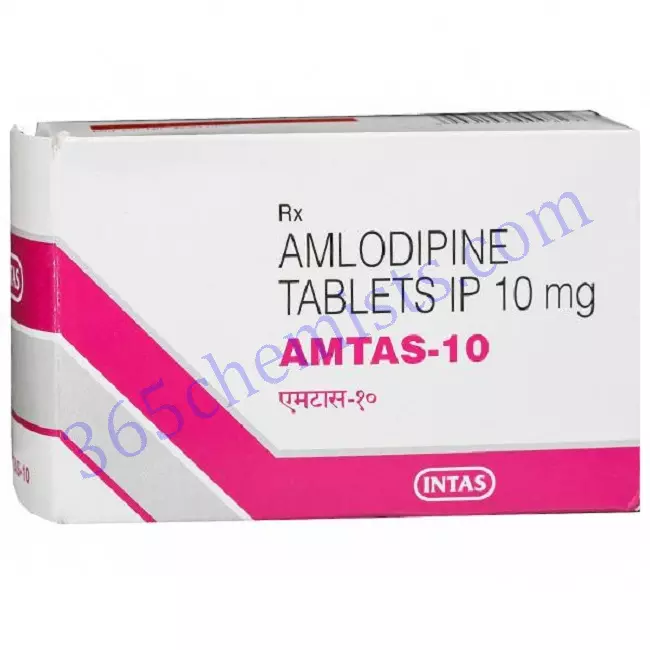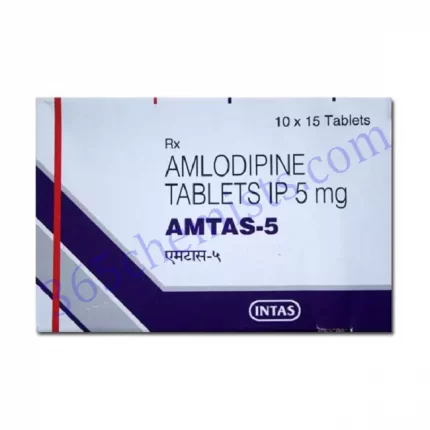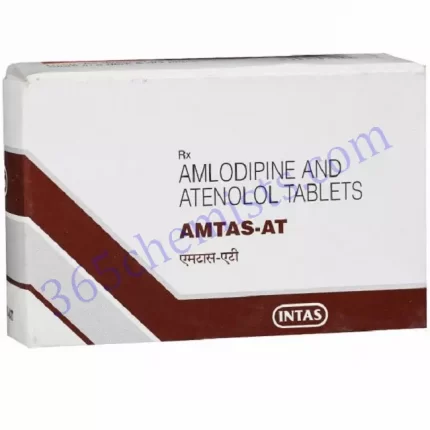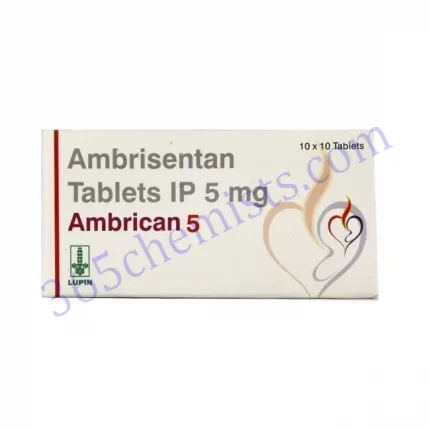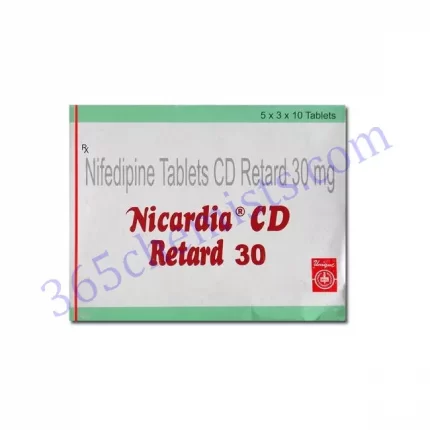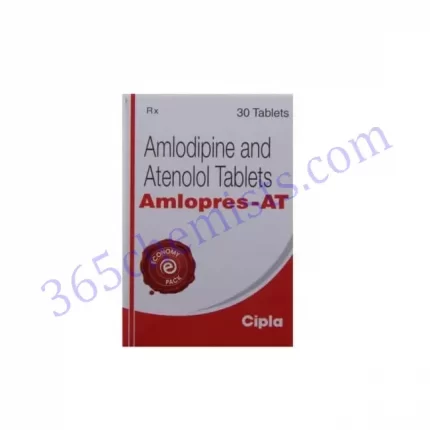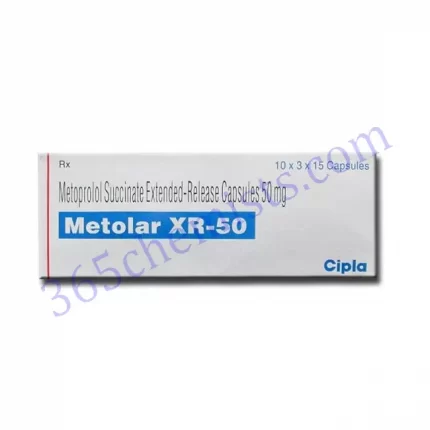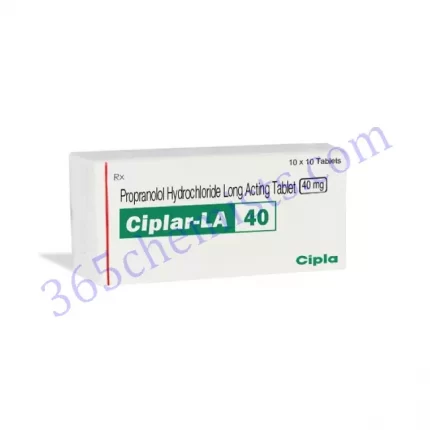AMTAS-10 Tablet (Amlodipine 10mg)
Tablets of the drug AMTAS-10, which have amlodipine as their primary active component, are available under the brand name AMTAS-10. It is most commonly recommended for the treatment of hypertension, also known as high blood pressure, as well as specific forms of chest discomfort that are collectively referred to as angina. Amlodipine is a member of a group of medications known as calcium channel blockers. These medications are effective because they cause the blood vessels to relax and widen, which results in an increase in blood flow and a decrease in blood pressure. This page offers a general introduction to AMTAS-10 Tablet, covering topics such as its applications, recommended dosage, potential adverse effects, and safety considerations.
Uses of AMTAS-10 Tablet
The primary application of the AMTAS-10 Tablet is in the control of hypertension, which is another name for high blood pressure. The issue of having high blood pressure is quite prevalent, and if it is not managed, it can cause major complications in one’s health. The AMTAS-10 helps to minimise the risk of heart attacks, strokes, and kidney problems that are related with hypertension by lowering the patient’s blood pressure. Because of how efficient it is as a treatment for hypertension and how rarely it has adverse effects, it is frequently recommended as a first-line therapy for the condition.
AMTAS-10 Tablet is utilised not only for the treatment of hypertension, but also for the treatment of angina, which is a sort of chest discomfort that takes place when the heart muscle does not receive enough blood that is rich in oxygen. Amlodipine works to alleviate chest discomfort and reduce the frequency of angina attacks by relaxing the blood vessels and increasing blood flow to the heart. This is accomplished by relaxing the blood vessels.
Dosage and Administration
It is possible for the recommended dosage of AMTAS-10 Tablet to change based on the medical state of the individual, their reaction to treatment, and various other circumstances. It is extremely crucial to follow the dosage directions that have been supplied to you by your healthcare practitioner or that have been mentioned on the label of your prescription medication. The recommended dosage of AMTAS-10 is one tablet once daily, either with or without food.
It is critical that the tablets not be broken up or chewed in any way; rather, they should be consumed whole with a full glass of water. Talk to your doctor or chemist if you have trouble swallowing tablets. They may be able to recommend alternate formulations of the medication or suggestions to help with the administration of the medication.
In order to get the most out of taking the AMTAS-10 Tablet, it is essential to do so on a consistent basis and at the same time each day. It is important that you do not stop taking the drug all of a sudden without first visiting your doctor or other healthcare practitioner, as this could result in an unexpected spike in blood pressure as well as other negative side effects. In the event that you forget to take a dose, you should do so as soon as you remember, unless the time for your next dose is getting close. In these circumstances, the missing dose should be ignored, and the regular dosing plan should be continued.
Related Product
Amtas M 50 Tablet
Amtas M 25 Tablet
Amtas E Tablet
Amtas AT 25 Tablet
Amtas LP Tablet
Amtas HT Tablet
Amtas AT Tablet
Amtas 10 Tablet
Amtas 5 Tablet
Amtas 2.5 Tablet
Side Effects of AMTAS-10 Tablet
AMTAS-10 Tablet, like any other medication, has the potential to cause adverse effects; however, not everyone will experience them. The following are some of the most frequently reported adverse effects associated with the usage of amlodipine:
- swollen extremities such as the hands, feet, or ankles
- A condition characterised by the reddening and warming of the skin.
- Headache
- Dizziness
- Fatigue
- Nausea
- Ache in the stomach
- Muscle cramps
These negative reactions to the medicine are often modest and only short; furthermore, they typically disappear as the body becomes accustomed to taking it. However, it is imperative that you communicate with your healthcare practitioner if any of these adverse effects continue or become more worse.
Amlodipine may, in extremely unusual circumstances, result in more serious adverse effects that call for prompt medical intervention. These are the following:
- Palpitations or a heartbeat that is irregular
- Uneasy and shallow breaths
- Severe dizziness or fainting
- discomfort or stiffness in the chest
- jaundice is characterised by yellowing of the skin as well as the eyes.
Symptoms of an allergic reaction, such as a rash, extreme itching, swelling, and severe dizziness
Seek immediate medical attention if you suffer any of these potentially life-threatening adverse effects.
Precautions and Warnings
Before beginning treatment with AMTAS-10 Tablet, it is essential to have a conversation with your healthcare practitioner about your past medical history as well as any medications or supplements that you are now taking. It’s possible for Amlodipine to interact negatively with a number of medical conditions and drugs, which could raise the chance of unwanted side effects or change how well it works. Notify your primary care physician if you are experiencing any of the following:
- Disease of the liver
- Diseases of the heart or heart failure
- a lowering in the blood pressure
- Medications to which they are allergic or sensitive.
- pregnancy or the formation of future conception plans
- Breastfeeding
It is essential to be aware that taking an AMTAS-10 Tablet while pregnant is not advised due to the potential risks it poses to the developing foetus. Talk to your primary care physician about the possibility of trying alternative treatments if you are pregnant or if you are making plans to get pregnant.
Conclusion
Amlodipine 10 mg, which is what is contained in an AMTAS-10 Tablet, is a drug that is used to treat hypertension as well as angina. It achieves these effects by dilating and relaxing the blood arteries, which leads to an increase in blood flow and a decrease in blood pressure. It is possible for AMTAS-10 to effectively regulate high blood pressure and reduce chest pain associated with angina when the medication is taken as advised. However, it is essential to take the medication exactly as prescribed, to be aware of any potential adverse effects, and to consult your healthcare professional with any concerns or questions you may have. Keep in mind that this article is intended to provide general information and should not be considered a substitute for professional medical advice.

